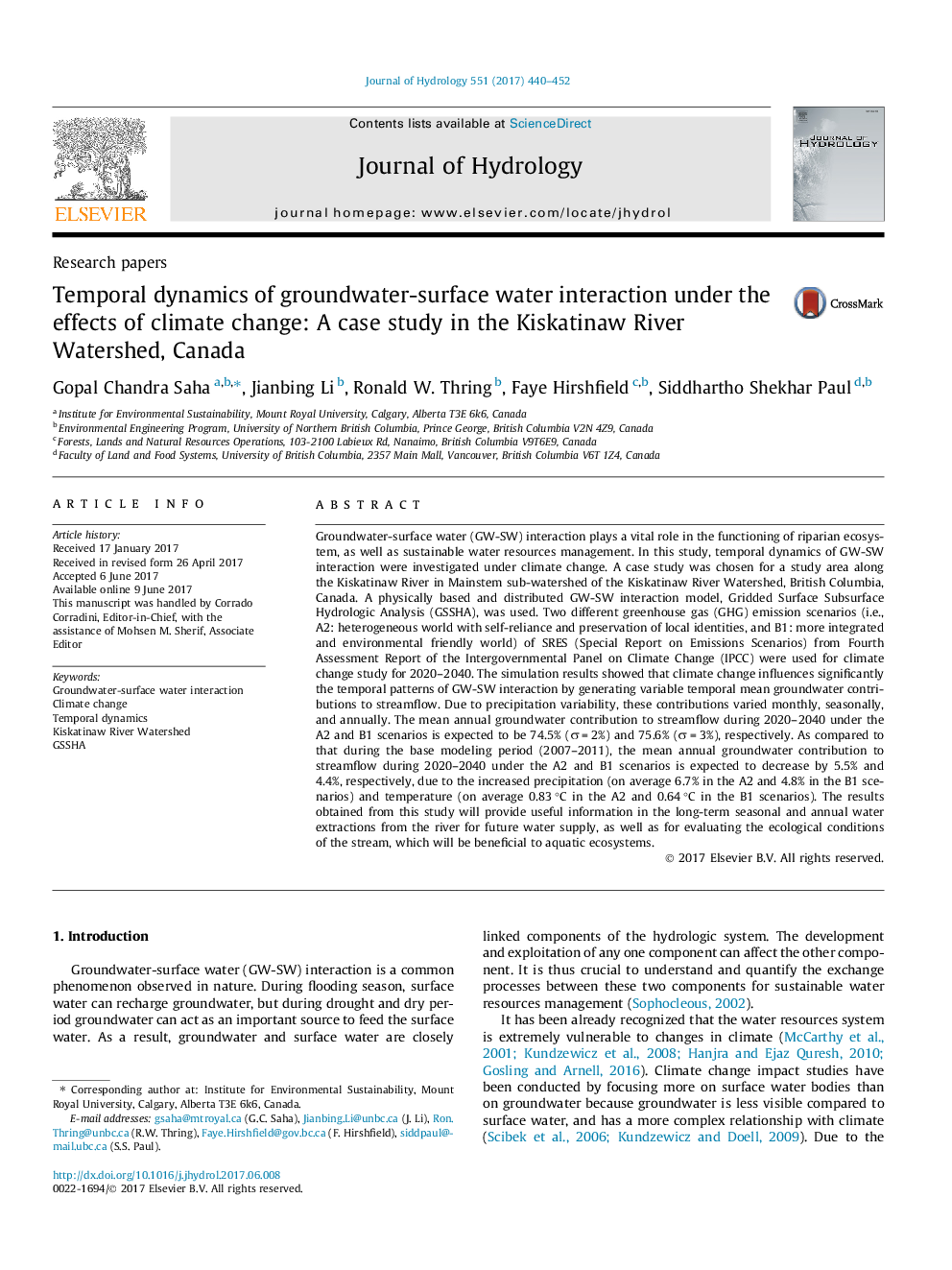| کد مقاله | کد نشریه | سال انتشار | مقاله انگلیسی | نسخه تمام متن |
|---|---|---|---|---|
| 5770913 | 1629903 | 2017 | 13 صفحه PDF | دانلود رایگان |

- Showed temporal dynamics of groundwater-surface water interaction using a new approach.
- The approach was based on temporal mean groundwater contributions to streamflow.
- Climate change significantly influences the temporal patterns of GW-SW interaction.
- Due to precipitation variability, these contributions varied monthly and annually.
- Results are useful for extracting stream water and assessing ecological conditions of stream.
Groundwater-surface water (GW-SW) interaction plays a vital role in the functioning of riparian ecosystem, as well as sustainable water resources management. In this study, temporal dynamics of GW-SW interaction were investigated under climate change. A case study was chosen for a study area along the Kiskatinaw River in Mainstem sub-watershed of the Kiskatinaw River Watershed, British Columbia, Canada. A physically based and distributed GW-SW interaction model, Gridded Surface Subsurface Hydrologic Analysis (GSSHA), was used. Two different greenhouse gas (GHG) emission scenarios (i.e., A2: heterogeneous world with self-reliance and preservation of local identities, and B1: more integrated and environmental friendly world) of SRES (Special Report on Emissions Scenarios) from Fourth Assessment Report of the Intergovernmental Panel on Climate Change (IPCC) were used for climate change study for 2020-2040. The simulation results showed that climate change influences significantly the temporal patterns of GW-SW interaction by generating variable temporal mean groundwater contributions to streamflow. Due to precipitation variability, these contributions varied monthly, seasonally, and annually. The mean annual groundwater contribution to streamflow during 2020-2040 under the A2 and B1 scenarios is expected to be 74.5% (Ï = 2%) and 75.6% (Ï = 3%), respectively. As compared to that during the base modeling period (2007-2011), the mean annual groundwater contribution to streamflow during 2020-2040 under the A2 and B1 scenarios is expected to decrease by 5.5% and 4.4%, respectively, due to the increased precipitation (on average 6.7% in the A2 and 4.8% in the B1 scenarios) and temperature (on average 0.83 °C in the A2 and 0.64 °C in the B1 scenarios). The results obtained from this study will provide useful information in the long-term seasonal and annual water extractions from the river for future water supply, as well as for evaluating the ecological conditions of the stream, which will be beneficial to aquatic ecosystems.
Journal: Journal of Hydrology - Volume 551, August 2017, Pages 440-452